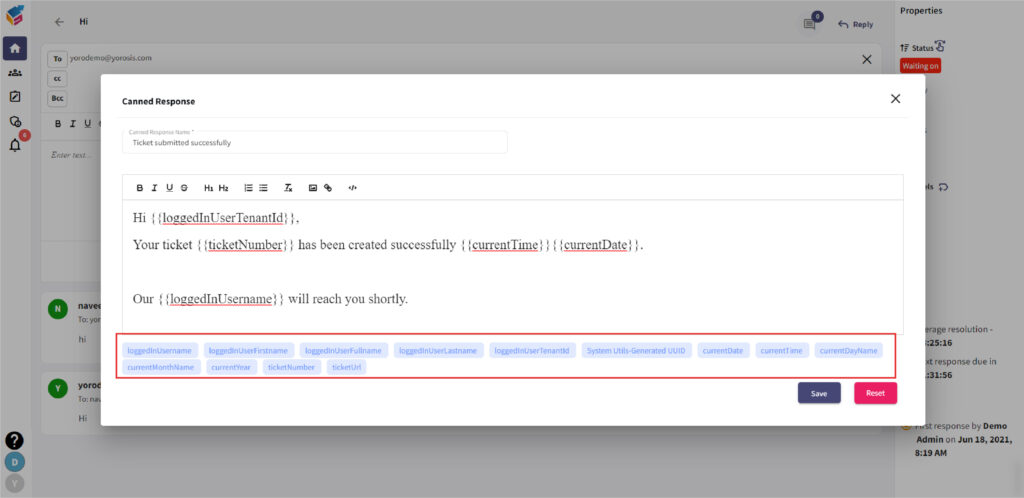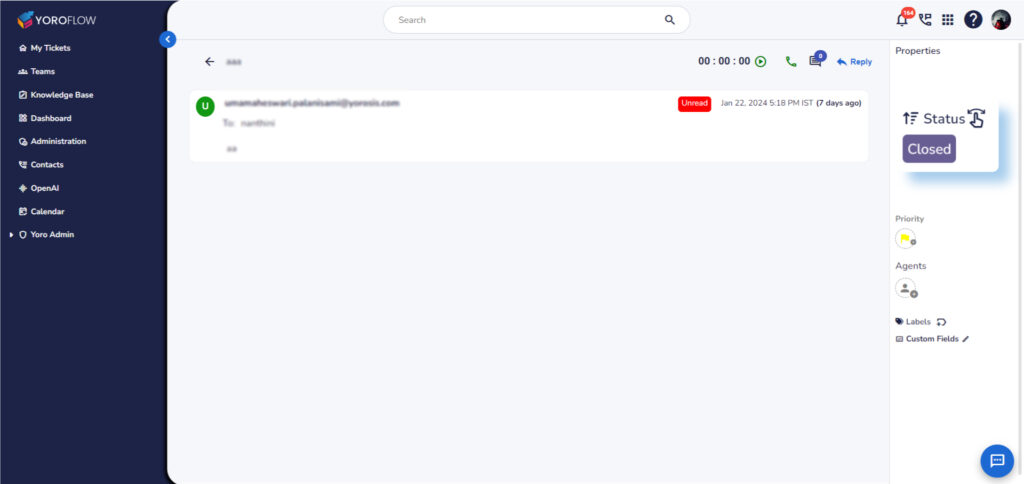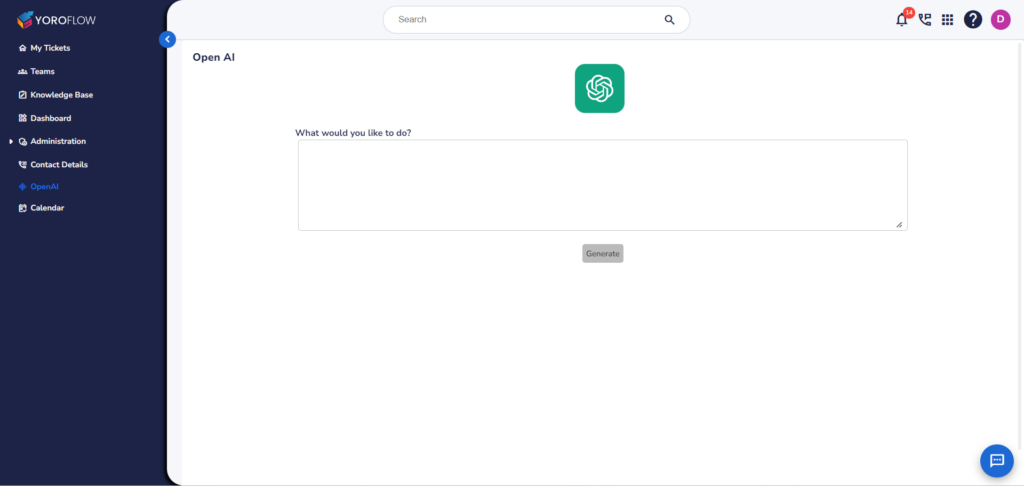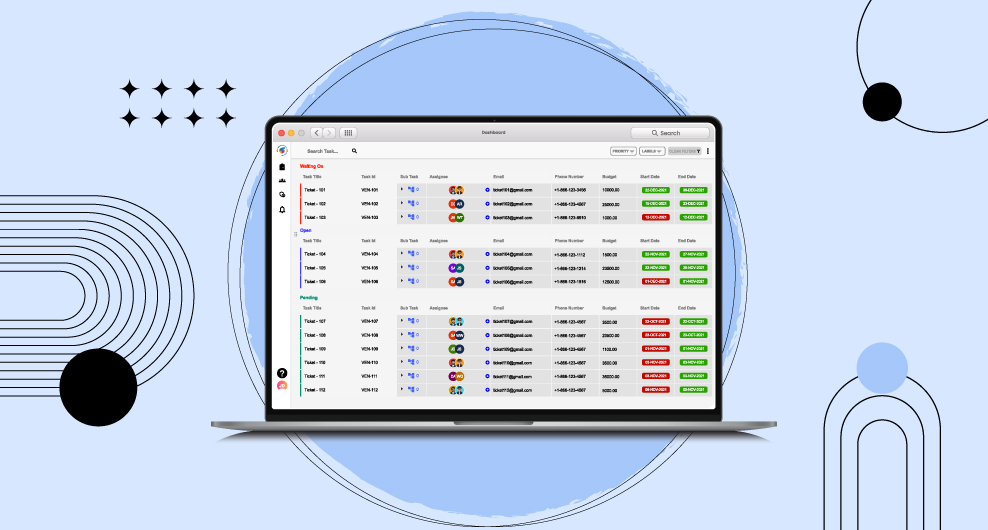Table of Contents
The significance of real-time support in customer service has grown, leading to the rise of conversational ticketing as a strategic advantage in the competitive market. This capability can be delivered by both human agents and bots on collaboration platforms such as Microsoft Teams and Slack.
Conversational ticketing earns its name from its capacity to enable users to initiate a ticket through a simple conversation, streamlining the entire process of ticket creation, processing, and management. This approach allows organizations to treat conversations as actionable tickets.
Microsoft Teams and Slack dominate the landscape of collaboration platforms, especially within large organizations. According to Demand Sage, Microsoft Teams boasts over 280 million active users, including a remarkable 91% of Fortune 500 companies. Slack, on the other hand, has 20 million daily active users, with a presence in 9% of Fortune 500 companies.
The integration of a ticketing management system into these messaging platforms empowers support teams to enhance the efficiency and effectiveness of their customer support.
This guide explores the transformative impact of conversational ticketing on customer service, showcasing the utilization of AI-driven solutions for delivering real-time support.
What is conversational ticketing?
Conversational ticketing serves as a real-time support system, enabling users to engage with support staff through platforms such as Microsoft Teams and Slack. This approach is alternatively referred to as conversational service, conversational support, or simply ticketing.
The functionality of conversational ticketing extends to users being able to seamlessly create, manage, and comment on tickets, resulting in a notable increase in ticket throughput. Once a conversation is converted into a ticket, the system efficiently directs it to the relevant agents for resolution.
This process is designed to support employees by meeting them within their existing work environments, eliminating the necessity for them to navigate away from their platforms when addressing tickets.
Traditional ticketing vs. conversational ticketing
Traditional ticketing and conversational ticketing represent two distinct approaches to managing customer support and issue resolution. Let’s explore the key differences between the two:
Traditional Ticketing:
Formalized Communication:
In traditional ticketing systems, interactions are typically formal and structured. Users submit detailed requests or issues through predefined forms.
Linear Process:
The process follows a linear path, with users providing information in a systematic manner. Tickets move through stages, such as creation, assignment, and resolution.
Batch Processing:
Tickets are often processed in batches, and there may be delays between stages. Agents address tickets based on priority or a predetermined schedule.
Structured Data Entry:
Users must adhere to a set format when entering information into ticket forms, ensuring a standardized approach.
Less Immediate:
Responses and resolutions may take time, and communication tends to be less immediate. Users might not receive real-time updates on their inquiries.
Conversational Ticketing:
Real-Time Interaction:
Conversational ticketing allows users to engage with support staff in real-time through chat-based platforms like Microsoft Teams or Slack.

Fluid and Dynamic:
Conversations are fluid and dynamic, mirroring natural language interactions. Users can initiate, manage, and comment on tickets seamlessly within a chat interface.
Continuous Flow:
There is a continuous flow of communication, eliminating the need for distinct stages. Conversations can evolve organically as issues are addressed.
Adaptive and Informal:
Data entry is less rigid, allowing for a more adaptive and informal exchange. Users can provide information in a conversational manner.
Immediate Responses:
The system enables immediate responses and resolutions. Agents can address issues as they arise, providing a more timely and responsive support experience.

Traditional ticketing relies on structured forms and follows a step-by-step process, whereas conversational ticketing prioritizes real-time, dynamic, and fluid interactions in a chat-based environment. Conversational ticketing aims to offer a more immediate and natural support experience for users.
Benefits of conversational ticketing
Conversational ticketing brings several benefits to customer support and issue resolution processes. Here are some key advantages:
Real-Time Interaction:
One of the primary benefits is the ability to engage with customers in real-time. Conversational ticketing allows for instant communication, addressing issues promptly and providing immediate assistance.
Enhanced User Experience:
The conversational nature of this approach creates a more natural and user-friendly experience. Users can interact in an intuitive way like everyday conversations.
Seamless Workflow:
Conversational ticketing integrates into chat-based platforms, allowing users to create, manage, and comment on tickets without leaving the messaging environment. This seamless workflow increases efficiency and user satisfaction.
Increased Throughput:
By streamlining the process of creating and managing tickets within a conversation, conversational ticketing can significantly increase the throughput of support requests. Ticket status results in quicker issue resolution and improved customer satisfaction.

Adaptability and Flexibility:
Conversational ticketing is adaptable to various communication styles and formats. Users can provide information in a more natural, conversational manner, making the system flexible and accommodating to different preferences.
Efficient Agent Collaboration:
Collaboration among support agents is enhanced as they can engage in real-time discussions within the same platform where tickets are managed. This fosters quick decision-making and collective problem-solving.
AI-driven Solutions:
Conversational ticketing often incorporates artificial intelligence (AI) for automated responses, ticket categorization, and initial issue triaging. This utilization of AI can improve response times and optimize the allocation of resources.

Accessibility:
The platform-independent nature of conversational ticketing allows users to access support services from various devices and locations. This accessibility contributes to a more user-centric support experience.
Data Enrichment:
Conversations inherently contain rich data. Conversational ticketing systems can leverage this data to gain insights into customer needs, preferences, and common issues. This information can inform strategic decision-making and improve service offerings.
Proactive Issue Resolution:
With real-time communication, support agents can proactively address potential issues before they escalate. This proactive approach contributes to customer satisfaction and loyalty.
Conversational ticketing offers a more immediate, adaptable, and user-centric approach to customer support, resulting in improved efficiency, user experience, and overall satisfaction.
Choose the right conversational support ticketing software
Modern customers increasingly prefer communication channels that offer swift assistance without causing disruptions or hindering efficiency. The shift towards conversational ticketing is on the rise, but successful implementation requires seamless integration with existing platforms to effectively connect end-users with support teams.
This integration facilitates real-time support within the platforms already utilized by support teams, eliminating much of the inconvenience associated with traditional support systems.
Yorodesk plays a crucial role in automating and optimizing management processes, particularly in ticketing systems. This automation streamlines the help desk process, enhancing efficiency and convenience. When coupled with Yorodesk‘s ticketing system, the result is a streamlined workflow and the automation of repetitive ticketing intake tasks, creating a more efficient helpdesk software that is free from delays, errors, and subpar support.




